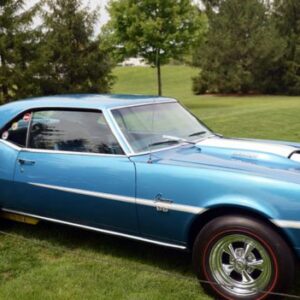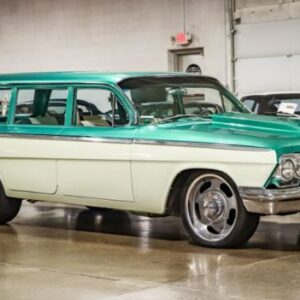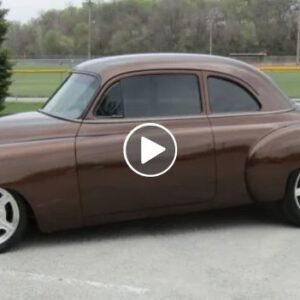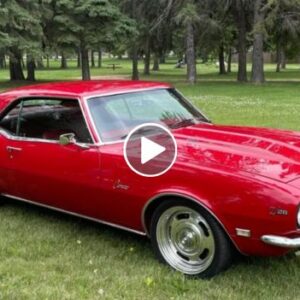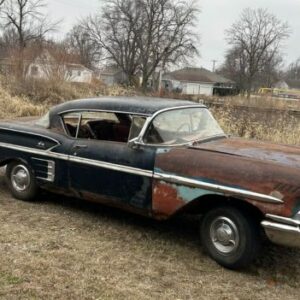The 1953 Peugeot 203 is a classic French automobile that beautifully showcases the elegance and charm of post-war European car design. Produced by the renowned French automaker Peugeot, the 203 was a popular family car during the 1950s and gained a reputation for its reliability, durability, and tasteful styling. In this article, we’ll dive into the rich history of the Peugeot brand, explore the features and specifications of the 1953 Peugeot 203, and discuss the car’s legacy in the world of vintage automobiles.
A Brief History of Peugeot
Peugeot is one of the oldest and most respected automakers in the world, with its origins dating back to 1810 when the Peugeot family established a manufacturing business in France. Initially focused on producing coffee mills and bicycles, the company ventured into the automotive industry in 1890 with the production of the Peugeot Type 3, a steam-powered car.
Throughout the 20th century, Peugeot continued to innovate, releasing numerous successful models and pioneering various automotive technologies. Following World War II, the company introduced the Peugeot 203, which was designed to meet the growing demand for comfortable and reliable family cars.
Features and Specifications of the 1953 Peugeot 203
The 1953 Peugeot 203 was a thoughtfully designed and well-engineered car that combined practicality with a touch of French flair. Let’s take a closer look at the various aspects of this classic automobile.
Exterior Design and Bodywork
The Peugeot 203 featured a streamlined and aerodynamic exterior design that was both stylish and functional. The car’s distinctive ponton-style bodywork, which was characterized by its smooth, unbroken lines, helped to reduce air resistance and improve fuel efficiency. The 203 was available in several body styles, including a four-door saloon, a two-door convertible, a five-door estate, and a light commercial van, catering to a wide range of customer needs.
Interior Design and Features
The interior of the 1953 Peugeot 203 was designed with passenger comfort and practicality in mind. The cabin was spacious and well-appointed, offering ample legroom and headroom for up to five occupants. The seats were upholstered in high-quality fabric, and the dashboard featured a simple, easy-to-read instrument panel. Additionally, the 203 was equipped with a heater and a ventilation system, which were considered luxury features at the time.
Engine and Performance
Under the hood of the 1953 Peugeot 203 was a 1.3-liter inline-four engine, which produced 42 horsepower and 57 pound-feet of torque. This engine was mated to a four-speed manual transmission, allowing the car to achieve a top speed of approximately 75 miles per hour. The 203 was also equipped with independent front suspension and a rear live axle, providing a smooth and comfortable ride.
The Peugeot 203 in Motorsports
The Peugeot 203’s reliability and durability made it a popular choice for motorsports enthusiasts during the 1950s. The car achieved numerous successes in various endurance races and rallies, including victories in the 1953 Redex Round Australia Trial and the 1954 Monte Carlo Rally. The 203’s performance on the racetrack further cemented its reputation as a dependable and versatile automobile.
Production Timeline
The Peugeot 203 was first introduced at the Paris Motor Show in 1947 and entered production in 1948. Over its 12-year production run, the model underwent several updates and improvements. Some of the key milestones in the 203’s production history include:
1950: Introduction of the 203 Cabriolet, a stylish two-door convertible.
1952: Introduction of the 203 Familiale, a five-door estate version with a third row of seats, increasing seating capacity to seven.
1954: Introduction of the 203 Commerciale, a light commercial van based on the Familiale body style.
1956: A facelift for the 203, featuring a redesigned front grille, updated exterior trim, and various mechanical improvements.
1960: End of production for the Peugeot 203, with the model being replaced by the Peugeot 404.
Lasting Impact on the Automotive Industry
The Peugeot 203 represented a significant step forward for the French automaker, both in terms of design and engineering. The car’s success helped to solidify Peugeot’s position as a leading European car manufacturer and set the stage for the company’s future growth and expansion.
The 203’s innovative features, such as its monocoque body construction and independent front suspension, influenced the design and engineering of subsequent Peugeot models and other European cars. The car’s enduring appeal and popularity among collectors and enthusiasts reflect the lasting impact of its design and performance on the automotive industry.
Moreover, the Peugeot 203 demonstrated the importance of a well-balanced combination of style, comfort, and reliability in a family car, a formula that continues to drive the development of modern automobiles. Its success in motorsports also helped to establish Peugeot’s reputation for producing durable and high-performing vehicles, which continues to this day with the company’s involvement in various racing disciplines, including the World Rally Championship and endurance racing.
The Legacy of the Peugeot 203
The Peugeot 203 enjoyed a production run of over a decade, from 1948 to 1960, with more than 685,000 units manufactured. The car’s popularity helped to establish Peugeot as a major player in the European automotive market and paved the way for the company’s future successes.
Today, the 1953 Peugeot 203 is considered a classic and highly sought-after vintage automobile. Its timeless design, innovative engineering, and rich history make it a favorite among collectors and enthusiasts alike. The 203 also holds a special place in the hearts of many who grew up with the car, as it represents a bygone era of automotive elegance and charm.
Conclusion
The 1953 Peugeot 203 is a shining example of post-war European automotive design and engineering. Its stylish exterior, comfortable interior, and reliable performance made it a popular choice for familiesand motorsports enthusiasts alike during the 1950s. The car’s enduring appeal and lasting legacy serve as a testament to Peugeot’s commitment to innovation and quality.
As a vintage automobile, the 1953 Peugeot 203 continues to captivate collectors and enthusiasts with its distinctive design, rich history, and timeless charm. The car stands as a reminder of a simpler time when cars were not just a means of transportation, but also a reflection of craftsmanship, elegance, and the spirit of innovation.
Whether you’re an avid collector or simply an admirer of classic automobiles, the 1953 Peugeot 203 undoubtedly holds a special place in the world of vintage cars. Its impact on the automotive industry and its continued appeal more than half a century after its production make it an enduring icon of French automotive excellence.
